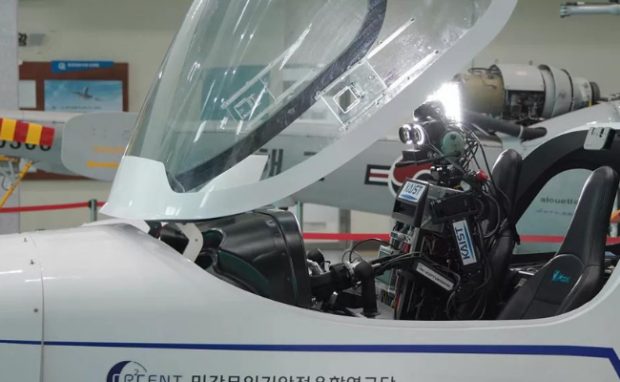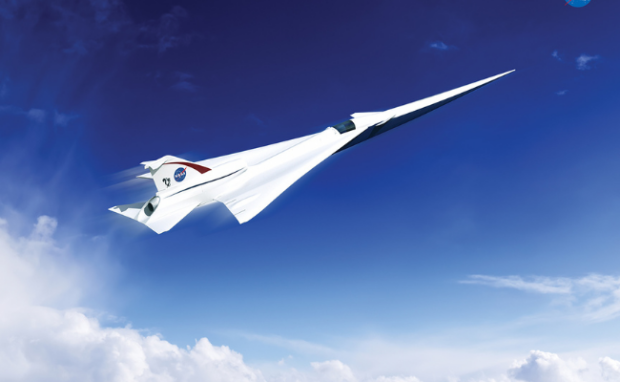Korean scientists created the first AI humanoid pilot
Do you remember the movie “Top Gun: Maverick,’ where the Air Force was about to replace the protagonist Maverick with an AI pilot? South Korean scientists recently unveiled a humanoid robot that can fly airplanes and understand their manuals. As a result, it can operate various aircraft with only a few settings changes.
The real world is becoming more like science fiction as we realize artificial intelligence systems previously isolated in films and stories. The humanoid AI bot requires additional research and development to be ready for practical use. Still, the day you book a flight operated by a robot pilot is drawing closer!
This article will discuss South Korea’s humanoid AI pilot, Pibot. Later, I will cover other tech projects merging artificial intelligence and aviation.
How does the humanoid AI pilot work?

Photo Credit: euronews.com
The AI-powered pilot is from the Korea Advanced Institute of Science & Technology (KAIST). Australian outlet Mirage News says it involved Professors David Hyunchul Shim, Jaegul Choo, Kuk-Jin Yoon, and Min Jun Kim.
David Shim explained their project to Euronews Next yesterday. “Pibot is a humanoid robot that can fly an aeroplane just like a human pilot by manipulating all the single controls in the cockpit, which is designed for humans,” the expert said.
Pibot is a portmanteau of “pilot” and “robot.” More importantly, it has limbs and fingers to accurately operate flight instruments usually controlled by human pilots.
It stands at 160 cm and weighs 65 kg, designed for “sitting and working.” Professor Shim elaborated, “The human form may not be super efficient, but we specifically designed Pibot to be a humanoid form because all the things are built for humans.”
“We can have eight arms and four eyes, but we find the human form is somehow optimal,” he added. Pibot has external cameras that monitor the aircraft’s status, and its internal ones help it manage control panel switches.
You may also like: NASA robot oversees oil rigs
What AI project would be complete without ChatGPT? Shim explained it uses OpenAI’s large language model so that its AI pilot can “understand” and memorize flight manuals:
“We had our predecessor of a pilot robot in 2016. At the time, we didn’t have good AI technology, so what we built was a simple robot. They cannot really learn anything from the literature or the manual. But recently, with ChatGPT or with other large language model systems, the technology made paramount progress,” Shim stated.
It can memorize emergency manuals and calculate a safe route based on its aircraft status. Moreover, it can communicate with air traffic controllers and humans in the cockpit with voice synthesis.
What are the other aviation projects?

Photo Credit: nasa.gov
Korea’s AI pilot is impressive as it can pilot existing aircraft. Also, Euronews Next says Pibot can drive cars, operate tanks, or command ships. What if you build a plane with built-in artificial intelligence systems?
The US Department of Defense and Lockheed Martin are testing an AI jet named VISTA X-62A, or Variable In-flight Simulation Test Aircraft. It has multiple artificial intelligence systems that mimic existing planes.
For example, it could behave like the MQ-20 fighter drone and the F-16 fixed-wing fighter jet. Consequently, the US Air Force can test new AI systems on existing aircraft without risking them.
It may seem like the United States will deploy automated pilots. However, Lockheed Martin said it will “keep people in control while enabling them to be safer, more effective, and better able to focus on higher-level tasks by empowering them to make more informed decisions quickly.”
You may also like: First tests authorized for an electric flying taxi
NASA has been developing another interesting aviation project. Instead of artificial intelligence, the experimental X-59 aircraft can take you anywhere in the world in two hours.
It is also known as the “Son of Concorde” because it can reach supersonic speeds like the historic Concorde plane. However, it produces “sonic thumps,” not sonic booms.
One of the original Concorde’s problems is its loud engines. Exceeding Mach speeds or breaking the sound barrier can shatter glass and hurt eardrums.
The NASA jet uses Quiet Supersonic Technology or “Quesst” to ensure its engines sound softer than two hands clapping. As a result, it could become viable for civilian airports.
Conclusion
Korean scientists announced they created an AI pilot that can operate most airplanes. Pibot uses ChatGPT to memorize manuals and human-like limbs and fingers to operate aircraft.
However, the research team says it will be available in 2026. Still, we can look forward to commercial flights using AI pilots soon. After all, other experts are merging AI with aviation.
Artificial intelligence is expanding to fields never thought possible, and it is just getting started! Learn more about the latest digital tips and trends at Inquirer Tech.